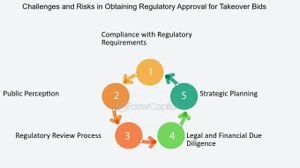Women’s sports leagues are experiencing unprecedented growth, and they’re bringing new attention and opportunities to female athletes. Whether it’s through the formation of new leagues or the expansion of existing ones, the demand for women's sports has never been higher. From professional basketball to the recent announcement of the Women’s Professional Baseball League, it seems women are ready to take center stage.
One of the most notable developments is the planned debut of the Women's Professional Baseball League (WPBL) set to launch in 2026. This initiative marks the first professional women's baseball league to emerge since the storied All-American Girls Professional Baseball League, which famously captured the nation's heart during World War II and was immortalized by the film A League of Their Own. Justine Siegal, one of the founders of the league, expressed enthusiasm, emphasizing the increasing interest in women's sports makes this the ideal time for such growth. "Women’s sports are on the rise," she noted, pointing to significant viewership increases and positive fan engagement across various sports.
Details about the WPBL remain sparse, as specific cities and team names have yet to be unveiled. What is known is the league aims to field six teams primarily located in the Northeast of the United States. Establishing broadcasting agreements is also high on their agenda, which experts believe will be pivotal for the league's success. Siegal, who made her mark as the first woman to coach for major league baseball, sees this as more than just another professional sports league; it’s about creating pathways for female athletes. With only 1,372 girls participating on boys’ baseball teams across the country, Siegal stresses the importance of building infrastructure to support girls who wish to play baseball.
The growth of women's leagues is not limited to baseball. The National Women’s Soccer League (NWSL) also anticipates the addition of new franchises, with one expected to be officially announced soon. Meanwhile, the WNBA is adding three new teams over the next two years, showcasing the sustained and increasing investment in women’s basketball. This dynamic expansion phenomenon has created fertile ground for younger female athletes, offering them increased visibility and opportunities, encouraging them to pursue sports professionally.
One individual working consistently within this environment is Caroline Fitzgerald, founder and CEO of GOALS, a consultancy dedicated to boosting the business side of women’s sports. Her story is illustrative of the path many female athletes and business leaders are charting. "Growing up, I wanted to play competitive baseball but there weren’t many opportunities for girls at my age. It only fueled my determination to excel, and now I want to create spaces for the next generation of girls to excel as well," Fitzgerald shared.
Fitzgerald started her career with the podcast The Business Case for Women’s Sports during the pandemic, fueled by her thirst to understand the gender gaps prevalent within the sports industry. Listening to her favorite female sports casts during this time made her realize the visibility and investment gap for women's sports was widening yet again. That realization led her to start GOALS, where she hopes to raise awareness and create actionable opportunities for growth throughout the women's sports sector.
"Women now have the chance to become leaders on and off the field, which has been proven to correlate with increased leadership skills later on," Fitzgerald stated, stressing the importance of youth sports organizations and female participation. The statistics back her up: studies have shown girls who are active in sports often grow up to be confident leaders. This notion mirrors the sentiment echoed by Siegal, as both women encourage newer generations of female athletes.
Beyond the leagues themselves, the grassroots efforts are reshaping the future of women’s sports. Initiatives like the Sports for Life program work to inspire young girls by providing opportunities and nurturing their potential. Through accessibility and visibility, these programs hope to diminish the long-standing stereotypes associated with women engaging competitively in sports. The key element is representation; when young girls see successful female athletes, they are more likely to envision themselves achieving similar feats.
The numbers are beginning to reflect not just participation growth, but economic growth as well. According to Deloitte’s forecast, revenues for women's professional sports are projected to exceed $1.28 billion globally by 2024. Women’s sports, historically underfunded, are beginning to shine under the spotlight as burgeoning markets for investment. Corporations are taking notice, realizing the potential returns on investments linked with women's sports far exceed the initial commitment.
For female athletes, coaches, and organizations across the sports spectrum, this current wave of growth is seen as both exciting and validating. Traditional narratives around women's sports are breaking down as society starts to embrace equity and diversity not just as ideas, but as business models. The founders of these leagues and organizations are united by their mission: to create sustainable ecosystems for women to compete and thrive.
Fitzgerald articulated this ethos effectively when she stated, “The future of sports is going to be built around inclusivity, especially for women and girls.” This growing acceptance and integration of female athletes could change the dynamics of many sports and their governing bodies.
Looking forward, it’s clear there’s much to build on. If current trends continue, women’s sports might become more than just adjacent to their male counterparts. With tangible investments at the league and grassroots levels, the momentum is unmistakable. From new franchises sprouting across major leagues to documentary series highlighting female athletes' journeys, this movement signals women won't just compete—they will redefine the game.
The challenge remains securing the foundational structure for these developments. The focus on youth engagement must not be overlooked; establishing accessibility for girls at the earliest ages will be instrumental for the leagues’ future sustainability. With female participation levels increasing steadily, it will take dedicated outreach, social change, and strategic investments to maintain momentum.
While the WPBL and other new leagues are just getting started, their presence alone draws attention and excitement to women’s sports. With leaders like Siegal and Fitzgerald paving the way, it’s hard not to think this is just the beginning. The upcoming years promise to be transformational not only for women's sports but for the culture surrounding athletics as well.



